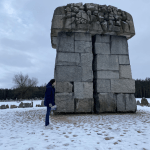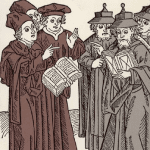Heinrich Himmler’s Directive: The Construction of Auschwitz in 1940
On This Day in Jewish History: April 27th, 1940 saw the beginning of an atrocity that would forever mark the pages of history. The construction of Auschwitz, a devastating symbol of the Holocaust, was ordered by Heinrich Himmler, Nazi Germany’s second most powerful man.
Himmler’s decision came after investigating multiple potential sites for the new concentration camp in the Polish town of Oświęcim. As an early member of the Nazi party and a close associate of Adolf Hitler, Himmler played a significant role in transforming Germany into a police state and implementing the Final Solution.
The site chosen for the construction of Auschwitz, Oświęcim, was a small Polish town with a significant Jewish population and a rich history. Its location and railway network made it an ideal choice for the Nazis.
The Jewish community in Oświęcim had a long and rich history, culminating in a thriving population before World War II. However, the war and the establishment of the Auschwitz camp led to horrific consequences for the community, including the destruction of numerous synagogues.
With the establishment of the Auschwitz camp, the Nazis began a reign of terror, arresting Poles and rapidly filling up local prisons. The location of Auschwitz, with its extensive railway network, made it easy for the Nazis to transport prisoners and supplies from across Europe.
The horrors of Auschwitz did not end with its construction. In the years that followed, the camp was expanded and other camps were built up around it. Auschwitz II, also known as Auschwitz-Birkenau, was designed with gas chambers and crematoriums and became the largest death camp during the Holocaust.
References:
United States Holocaust Memorial Museum
Institute of Current World Affairs
Museum of Jewish Heritage — A Living Memorial to the Holocaust













